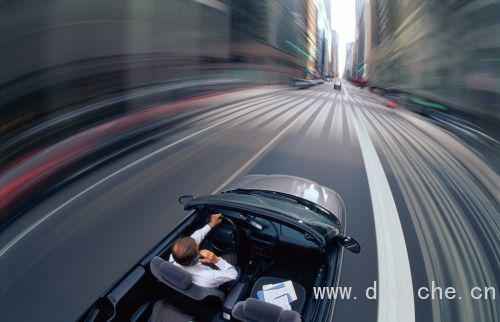Friends who have a driving book will definitely be able to drive, even if they haven’t bought a car yet, but at least they can use a car, then let’s popularize the simplecarKnowledge, give a reassurance to the little friends who are new to getting a driver's license.The transmission of vehicle power is first from the engine to the gearbox, and then bytransmission shaftPassing to the driving wheels and letting the car move forward, the amount of power output depends on the degree of accelerator pedaling. From the perspective of fuel economy, with the smallest power output and the fastest speed, the highest work efficiency will be achieved.
1. Refuel lightly, brake lightly, and brake early
Driving hardbrake, Starting hard, and stepping on the gas pedal are all taboos to save fuel. The fuel-saving test shows that stepping on the accelerator is 2 to 3 times more expensive than driving at a medium speed. Therefore, the throttle range should be appropriately reduced under the premise of ensuring the normal driving of the car. When you see the red light on or when you enter or exit the highway, you can lightly step on the brakes in advance to slow down, and use the remaining power of the engine to let the vehicle slide forward.
2. Shift timing and gear selection
The timing of shifting gears should be between 2500-3000 rpm as far as possible, so that better economy can be obtained under the premise of ensuring the power supply.To put an end to low gears and high speeds, drive manuallytransmissionWhen driving a car with an automatic transmission, you should switch to high gear in time after the speed has stabilized. When driving a car with automatic transmission, you should try to avoid using the "sports" mode. In addition, manual gear should prevent high gear starting.
3. Speed up after warming up
Running the engine at low temperature is more fuel-consuming than running after the temperature rises, so do not accelerate immediately when starting, but should slow down for a few minutes to let the engine warm up before accelerating.
4. Grasp the economic speed of vehicles
Economic speed refers to the most fuel-efficient driving speed. The economic speed of various models is different. Please read the vehicle manual carefully, but it will generally be around 70-90 km/h. Below or above this speed, fuel consumption will increase.
5. Pay attention to the running-in period of new cars
Whether the driving method during the running-in period is correct or not will have a great impact on the fuel economy of the engine in the future. So we must keep in mind that the speed does not exceed 80 kilometers per hour,Rotating speedDo not break the driving principle during the running-in period of a new car that does not exceed 4,000 rpm.
6. Reasonable use of air conditioners
When the temperature is suitable, when the speed is less than 60 kilometers per hour, you can open the window for ventilation without turning on the air conditioner, or only use the ventilation function of the air conditioner instead of its cooling function, so that the air conditionercompressorIt will not start, thereby saving fuel. However, it is not recommended to open windows for ventilation when the speed is higher than 90 kilometers per hour, because the air resistance is very large at this time, and the air conditioner is more fuel-efficient.
Maintenance articles
Regular car maintenance is very important.iftirediscouraged,Spark plugAbrasion and clogging of the air filter will cause gasoline consumption.
1. Pay attention to check the tire system
Insufficient air pressure will increasetireThe friction with the ground increases fuel consumption, so you should always check the tire pressure. Different models and tires have different pressure standards. In addition, if the tires are severely worn, slipping will occur, and fuel consumption will increase, and tires must be replaced if necessary.
2. Pay attention to frequently check the brake system
Some cars will have a slight drag brake, including the hand brake, which is equivalent to increasing the load of the car when driving, which will increase the fuel consumption, so regular inspections are required.
3. Reduce the load
Statistics show that every additional kilogram of load will increase fuel consumption by 1%, so it is necessary to minimize the unused debris in the trunk.
4. Regular maintenance and replacement of parts
air filter,gasolineFilter,Oil filterIt needs to be replaced every 5,000 kilometers, because the air filter blockage will reduce the gas volume, resulting in insufficient gasoline combustion and reducing fuel efficiency.Clutch plate,clutchThe wear of the pressure plate, the use of the spark plug for too long, will also increase the fuel consumption, so it should be replaced regularly.
Misunderstanding of driving knowledge
1. Put the neutral gear to save fuel
EarlyCarburetorPutting the car in neutral can save fuel, but the EFI car we use now is not. Because some cars release the throttle during acceleration, the fuel injection system stops fuel supply, and resumes fuel supply when the engine speed drops to 2000 rpm. Therefore, the EFI car will save fuel when coasting with gear at high speed, and it will consume fuel when the neutral gear is released.
2. The higher the gasoline puff value, the better
The gasoline suitable for each model of car is generally marked on the manual. Many car owners now think that the better the oil, the better the car, but it is not. The use of higher-quality oil than the vehicle itself requires is not only expensive, but also has a negative impact on the engine.
3. Long idling
The fuel-saving test proved that the fuel consumption of the engine idling for 3 minutes can allow the car to travel 1 km. Therefore, if the residence time exceeds 1 minute, the flame is turned off. However, the fuel consumption of restarting is often 20% higher than that of normal driving, so idle speed should be selected for short-term parking.











 Email:
Email: